Growing Coriander in Water: Imagine fresh, vibrant coriander always at your fingertips, ready to elevate your culinary creations. No more last-minute grocery runs or watching your precious herbs wilt away in the fridge! This simple DIY trick unlocks a world of flavor, right from your kitchen counter.
For centuries, cultures around the globe have cherished coriander, also known as cilantro, for its distinct aroma and medicinal properties. From ancient Egyptian tombs to the bustling markets of Southeast Asia, this herb has played a vital role in cuisines and traditional remedies. But what if I told you that you don’t need a sprawling garden to enjoy its fresh, zesty flavor?
In today’s fast-paced world, many of us lack the time or space for extensive gardening. That’s where this ingenious hack comes in. Growing Coriander in Water is not only incredibly easy, but it’s also a sustainable way to enjoy fresh herbs year-round. Say goodbye to wasted coriander and hello to a constant supply of this culinary gem. I’m excited to share this simple yet effective method that will transform your kitchen into a mini herb garden!
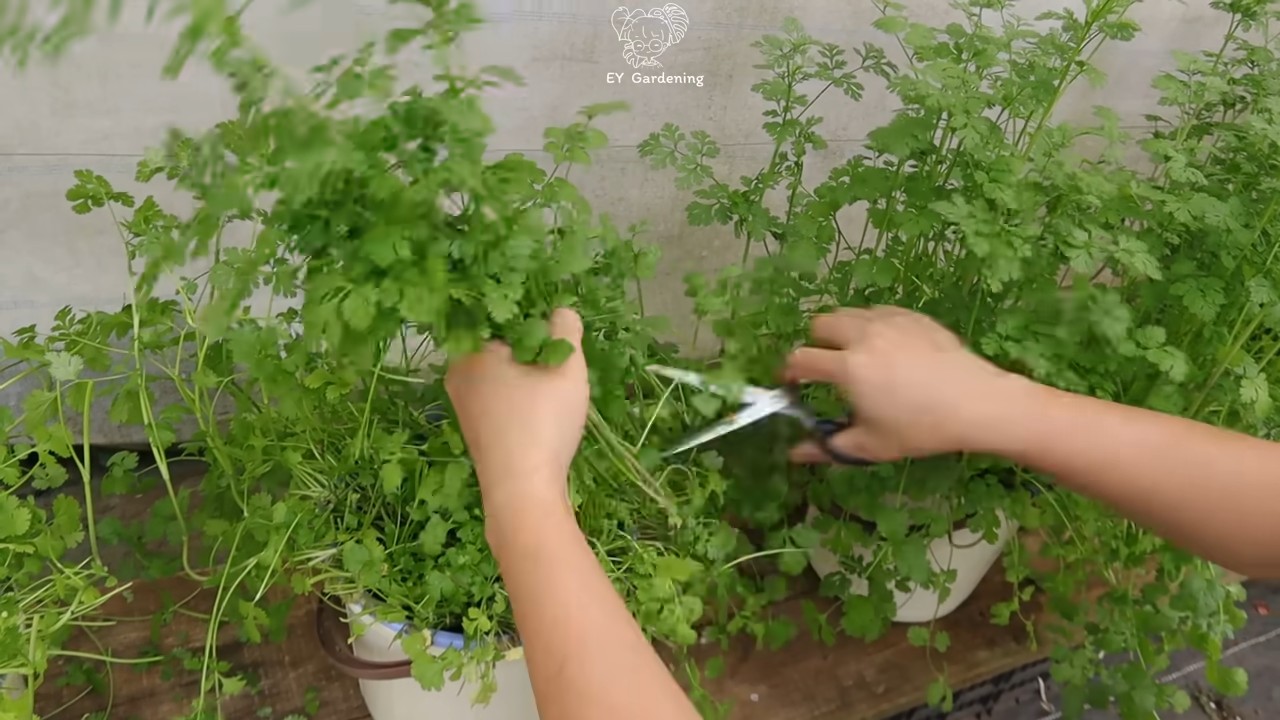
Growing Coriander in Water: A Simple DIY Guide
Hey there, fellow plant enthusiasts! Ever wished you could have fresh coriander (cilantro) on hand whenever you needed it, without constantly buying bunches that wilt away in your fridge? Well, I’ve got a fantastic solution for you: growing coriander in water! It’s surprisingly easy, requires minimal effort, and provides a continuous supply of this flavorful herb. Let’s dive in!
What You’ll Need
Before we get started, let’s gather our supplies. This is a pretty low-key project, so you probably already have most of these items at home:
* A bunch of fresh coriander (cilantro) from the grocery store or your garden. Look for healthy-looking stems with roots attached. This is crucial!
* A glass jar or container. A mason jar, a recycled glass, or even a plastic cup will work. Just make sure it’s clean.
* Clean, filtered water. Tap water is usually fine, but if your tap water is heavily chlorinated, let it sit out for 24 hours before using it, or use filtered water.
* A sunny windowsill or a spot with good indirect light. Coriander needs light to thrive.
* Optional: Liquid fertilizer (balanced, diluted). This will give your coriander a boost, but it’s not strictly necessary.
Selecting Your Coriander
This is probably the most important step. You can’t just stick any coriander stem in water and expect it to grow. You need stems with roots!
* Look for Roots: When you’re buying your coriander, carefully examine the base of the bunch. You’re looking for small, white or light-brown roots. Sometimes, they’re hidden beneath the stems, so you might need to gently separate them to get a good look.
* Healthy Stems: Choose stems that are firm and green, not wilted or yellowing. Avoid any stems that look slimy or have signs of rot.
* Leaf Condition: While the roots are the most important thing, also check the leaves. They should be vibrant and healthy-looking. A few blemishes are okay, but avoid bunches with widespread damage.
Step-by-Step Instructions
Okay, now for the fun part! Here’s how to grow coriander in water:
1. Prepare the Coriander: Gently separate the coriander stems, being careful not to damage the roots. Remove any yellowing or damaged leaves from the lower part of the stems. This will prevent them from rotting in the water.
2. Prepare the Jar: Thoroughly clean your glass jar or container with soap and water. Rinse it well to remove any soap residue.
3. Add Water: Fill the jar with clean, filtered water. Leave about an inch of space at the top.
4. Place the Coriander in Water: Carefully place the coriander stems in the jar, ensuring that the roots are submerged in the water. The leaves should be above the water line. Don’t overcrowd the jar; give the stems enough space to breathe. If you have a large bunch of coriander, you might want to divide it into two or more jars.
5. Find a Sunny Spot: Place the jar on a sunny windowsill or in a spot with good indirect light. Coriander needs at least 4-6 hours of sunlight per day to grow well. If you don’t have a sunny windowsill, you can use a grow light.
6. Change the Water Regularly: This is crucial for preventing algae growth and keeping your coriander healthy. Change the water every 1-2 days. When you change the water, gently rinse the roots to remove any debris.
7. Optional: Add Fertilizer: If you want to give your coriander a boost, you can add a diluted liquid fertilizer to the water every 2-3 weeks. Use a balanced fertilizer (e.g., 20-20-20) and dilute it to half the recommended strength. Be careful not to over-fertilize, as this can damage the roots.
8. Harvest Your Coriander: Once the coriander has grown to a decent size, you can start harvesting it. Simply snip off the leaves you need with scissors. Avoid cutting off more than one-third of the plant at a time, as this can stress it. The coriander will continue to grow and produce new leaves.
Troubleshooting
Even with the best intentions, sometimes things don’t go exactly as planned. Here are a few common problems you might encounter and how to fix them:
* Yellowing Leaves: This can be caused by several factors, including overwatering, underwatering, lack of light, or nutrient deficiency. Make sure you’re changing the water regularly, providing enough light, and adding fertilizer if needed.
* Root Rot: This is usually caused by stagnant water. Make sure you’re changing the water frequently and that the jar is clean. If you see signs of root rot (e.g., slimy, brown roots), remove the affected stems immediately.
* Slow Growth: This can be caused by lack of light or nutrient deficiency. Make sure your coriander is getting enough sunlight and consider adding fertilizer.
* Algae Growth: Algae can grow in the water if it’s exposed to too much light. To prevent algae growth, change the water frequently and consider using an opaque jar.
Tips for Success
Here are a few extra tips to help you grow thriving coriander in water:
* Use Filtered Water: As mentioned earlier, filtered water is best for growing coriander in water. Tap water can contain chlorine and other chemicals that can harm the plants.
* Don’t Overcrowd: Give the coriander stems enough space to breathe. Overcrowding can lead to poor air circulation and increase the risk of disease.
* Rotate the Jar: Rotate the jar regularly to ensure that all sides of the plant get equal exposure to sunlight.
* Be Patient: It takes time for coriander to grow. Don’t get discouraged if you don’t see results immediately. With proper care, your coriander will eventually thrive.
* Consider the Temperature: Coriander prefers cooler temperatures. Avoid placing the jar in direct sunlight during the hottest part of the day, as this can overheat the water and damage the roots.
* Experiment with Different Varieties: There are many different varieties of coriander, each with its own unique flavor and growth habits. Experiment with different varieties to find one that you like.
* Keep an Eye Out for Pests: While growing coriander in water is less susceptible to pests than growing it in soil, it’s still important to keep an eye out for any signs of infestation. If you see any pests, such as aphids or spider mites, you can try washing them off with a strong stream of water or using an insecticidal soap.
Harvesting and Using Your Homegrown Coriander
Now that you’ve successfully grown your coriander, it’s time to enjoy the fruits (or rather, leaves) of your labor!
* Harvesting: As mentioned earlier, simply snip off the leaves you need with scissors. Avoid cutting off more than one-third of the plant at a time. The best time to harvest coriander is in the morning, after the dew has dried.
* Using Your Coriander: Fresh coriander is a versatile herb that can be used in a variety of dishes. It’s a staple in Mexican, Indian, and Southeast Asian cuisine. You can use it to garnish tacos, curries, soups, and salads. You can also add it to dips, sauces, and marinades.
* Storing Coriander: If you have more coriander than you can use right away, you can store it in the refrigerator. Wrap the coriander in a damp paper towel and place it in a plastic bag. It will stay fresh for several days. You can also freeze coriander for longer storage. Chop the coriander and place it in ice cube trays. Fill the trays with water or olive oil and freeze. Once frozen, transfer the cubes to a freezer bag.
Extending the Life of Your Water-Grown Coriander
While growing coriander in water is a great way to have fresh herbs on hand, it’s not a permanent solution. Eventually, the coriander will start to decline. However, there are a few things you can do to extend its life:
* Repotting: If your coriander is starting to outgrow its jar, you can repot it into a larger container with soil. This will give it more room to grow and access to nutrients.
* Taking Cuttings: You can also take cuttings from your water-grown coriander and root them in soil. This is a great way to propagate new plants. To take a cutting, simply snip off a stem that is about 4-6 inches long. Remove the leaves from the lower part of the stem and place it in a glass of water. Once the cutting has developed roots, you can plant it in soil.
* Starting from Seed: If you want a continuous supply of coriander, you can also start new plants from seed. Coriander seeds are readily available at most garden centers.
Growing coriander in water is a fun
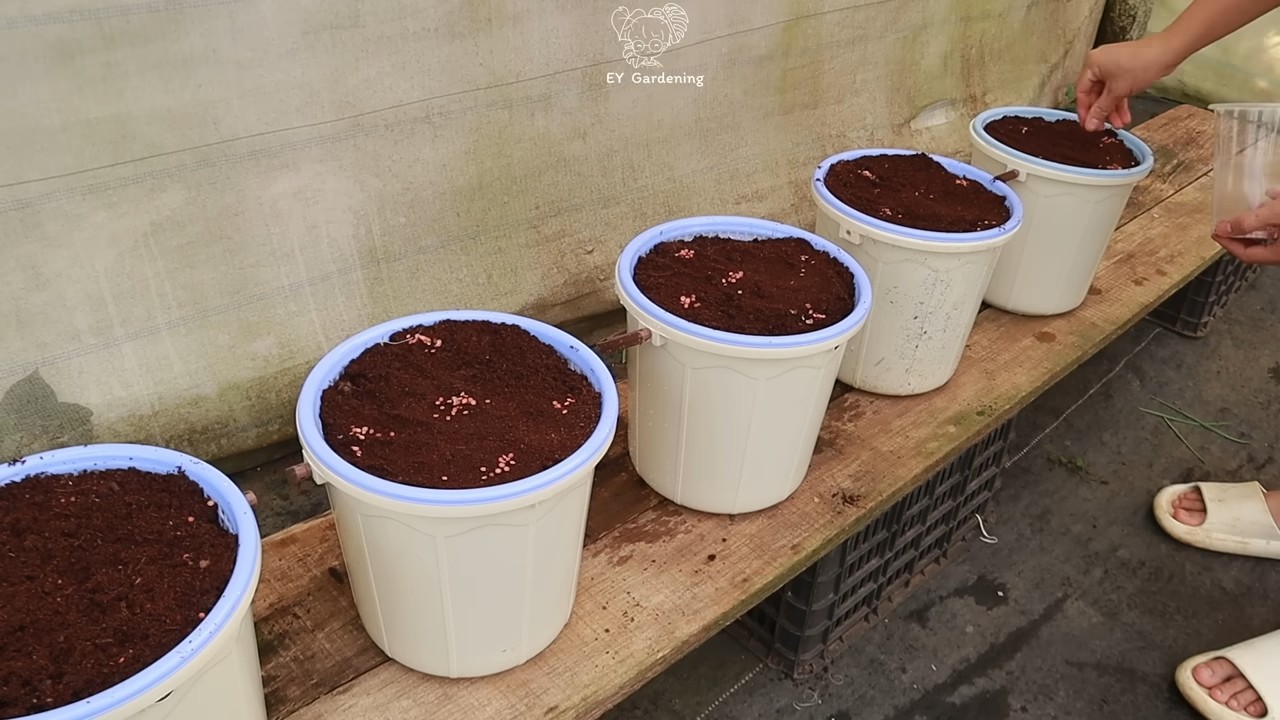
Conclusion
So, there you have it! Growing coriander in water is not just a quirky experiment; it’s a genuinely effective way to enjoy fresh, flavorful coriander right at your fingertips. We’ve walked you through the simple steps, highlighting the ease and accessibility of this method. Forget those wilting bunches from the grocery store that seem to expire the moment you get them home. With this DIY trick, you can have a constant supply of vibrant green coriander, ready to elevate your culinary creations.
The beauty of this method lies in its simplicity and sustainability. You’re essentially giving new life to coriander stems that would otherwise end up in the compost bin. It’s a fantastic way to reduce food waste and embrace a more eco-conscious approach to cooking. Plus, it’s incredibly rewarding to watch those roots sprout and the leaves flourish, knowing you’ve nurtured them with just a little water and care.
But don’t just take our word for it! We encourage you to give this a try. Start with a small batch of coriander stems and see the magic unfold. Once you’ve mastered the basics, feel free to experiment. Try different types of containers – glass jars, repurposed plastic bottles, or even a dedicated hydroponic setup. Consider adding a diluted liquid fertilizer to the water every few weeks to boost growth and enhance the flavor of your coriander.
Variations and Enhancements:
* Hydroponic Nutrients: While water alone works wonders, adding a diluted hydroponic nutrient solution can significantly boost growth and yield. Look for solutions specifically formulated for leafy greens.
* Light Source: If you live in a region with limited sunlight, consider supplementing with a grow light. This will ensure your coriander receives adequate light for optimal growth.
* Container Choice: Experiment with different containers. Clear glass jars allow you to monitor root growth, while opaque containers can help prevent algae growth.
* Companion Planting: While this is primarily a water-based method, you could eventually transfer your rooted coriander to a small pot of soil alongside other herbs like mint or parsley for a mini indoor herb garden.
This method of growing coriander in water is more than just a gardening hack; it’s a gateway to a fresher, more flavorful culinary experience. It’s a testament to the fact that you don’t need a sprawling garden to enjoy the benefits of homegrown herbs.
We’re confident that you’ll be amazed by the results. And we’d love to hear about your experiences! Share your photos, tips, and variations on social media using #CorianderInWater or tag us in your posts. Let’s create a community of coriander enthusiasts, all enjoying the delicious rewards of this simple yet effective DIY trick. Happy growing!
Frequently Asked Questions (FAQ)
Q: How long does it take for coriander to grow roots in water?
A: Typically, you should start seeing roots emerge from the coriander stems within 5-7 days. However, this can vary depending on factors such as the freshness of the coriander, the water temperature, and the amount of light it receives. Be patient, and ensure the stems are submerged in water up to the first set of leaves.
Q: What kind of water should I use for growing coriander in water?
A: It’s best to use filtered or dechlorinated water. Tap water often contains chlorine and other chemicals that can inhibit root growth. If you only have access to tap water, let it sit in an open container for 24 hours to allow the chlorine to evaporate before using it for your coriander.
Q: How often should I change the water?
A: Change the water every 2-3 days to prevent the growth of bacteria and algae. This will also ensure that the coriander stems are receiving fresh, oxygenated water, which is essential for healthy root development.
Q: What if my coriander stems start to turn yellow or brown?
A: Yellowing or browning of the stems can indicate a few things. It could be a sign of overwatering, lack of nutrients, or exposure to direct sunlight. Make sure you’re changing the water regularly, and consider adding a diluted liquid fertilizer to the water every few weeks. Also, ensure the coriander is receiving bright, indirect sunlight. If the problem persists, try using fresh coriander stems.
Q: Can I grow coriander in water indefinitely?
A: While you can keep coriander growing in water for a considerable amount of time, it’s not a truly sustainable long-term solution. Eventually, the plant will deplete the nutrients in the water and may become less productive. For long-term growth, consider transplanting the rooted coriander to a small pot of soil.
Q: What kind of fertilizer should I use?
A: A balanced liquid fertilizer specifically formulated for leafy greens is ideal. Look for a fertilizer with an NPK ratio (Nitrogen, Phosphorus, Potassium) that is relatively even, such as 10-10-10 or 20-20-20. Dilute the fertilizer according to the instructions on the packaging, and add it to the water every 2-3 weeks.
Q: How much sunlight does coriander need when growing in water?
A: Coriander thrives in bright, indirect sunlight. Avoid placing it in direct sunlight, as this can scorch the leaves. A spot near a window that receives morning sun or filtered afternoon sun is ideal. If you don’t have access to enough natural light, consider using a grow light.
Q: Can I use this method to grow other herbs?
A: Yes, this method can be used to propagate other herbs such as mint, basil, and parsley. The process is essentially the same: take cuttings from healthy stems, place them in water, and wait for roots to develop.
Q: My coriander is growing, but the leaves are small and pale. What am I doing wrong?
A: Small, pale leaves can indicate a lack of nutrients or insufficient light. Try adding a diluted liquid fertilizer to the water and ensure the coriander is receiving adequate light. You might also consider moving it to a slightly warmer location.
Q: Is it better to grow coriander from seed or from cuttings in water?
A: Growing coriander from seed is a more traditional method, but growing from cuttings in water is a faster and more convenient way to get a continuous supply of fresh coriander. Starting from cuttings allows you to bypass the germination process and quickly establish a new plant. It’s also a great way to propagate coriander from stems that you would otherwise discard.
Q: Can I harvest the coriander leaves while it’s growing in water?
A: Absolutely! Once the coriander has developed a good root system and the leaves are a decent size, you can start harvesting them. Simply snip off the leaves as needed, being careful not to damage the main stem. This will encourage the plant to produce more leaves.
Q: What are some common problems when growing coriander in water and how can I fix them?
A: Some common problems include algae growth, yellowing leaves, and stem rot. To prevent algae growth, use an opaque container or cover the container with foil. Yellowing leaves can be addressed by adding fertilizer and ensuring adequate light. Stem rot can be prevented by changing the water regularly and removing any decaying leaves.
Q: How do I know when it’s time to transplant my water-grown coriander to soil?
A: Once the roots are a few inches long and well-developed, it’s a good time to transplant your coriander to soil. Choose a small pot with well-draining soil and gently transfer the plant, being careful not to damage the roots. Water thoroughly after transplanting and keep the soil moist but not waterlogged.

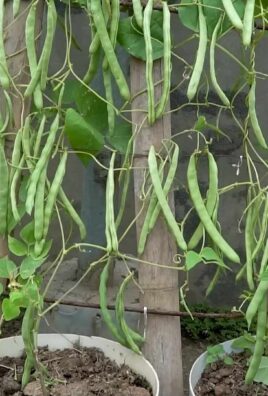
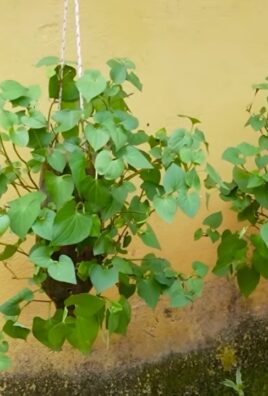
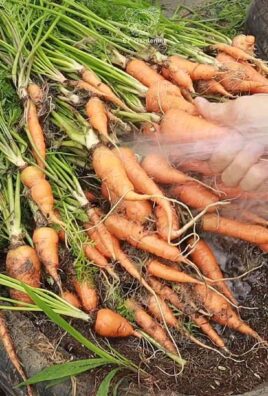
Leave a Comment